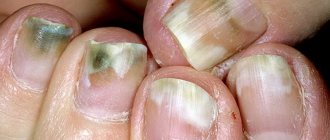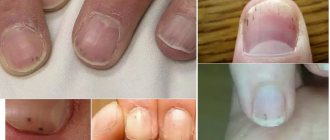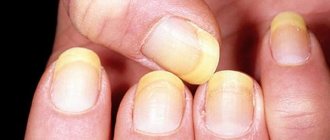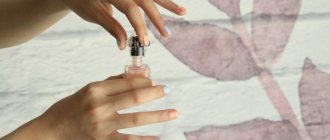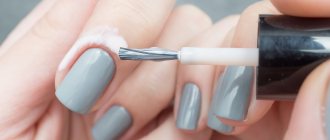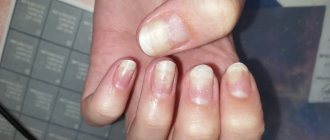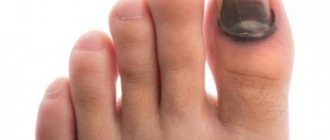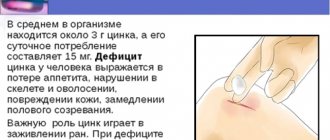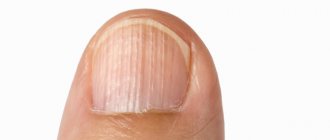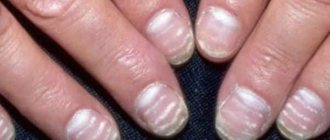Why do you need to remove the nail plate?
First of all, the fungus (onychomycosis) attacks the big toe. The reason is simple: the main part of the nail is often found in shoes. Bacteria that get on the plate begin to actively spread and cause harm. The nail may become curled and the finger may swell. Usually a person seeks medical help at this stage: unsuccessful self-medication leads to the neglect of the condition. When a fungus appears, the attending physician carries out therapy, prescribing various ointments and drops. They are designed to destroy the root of the disease. If the stage is late, then the medications cannot reach their target. Advanced cases require long-term therapy. Factors such as excessive sweating of the feet or certain features of shoes can complicate treatment. In order for drugs to access the source of infection, it is necessary to remove the affected area. This is the fastest way to get rid of onychomycosis. Removal of the plate is prescribed in the following cases:
- at least 70% of the nail is infected;
- the affected plate structure and finger swelling make it difficult to walk;
- the infection caused an ingrown nail;
- the root of the nail plate is infected;
- relapses.
Since the nail has a protective function, removing it completely is dangerous. This can provoke additional infection and cause severe discomfort during the recovery period. In some cases, only the top layer or a certain part of the nail plate requires removal. If previously the fungus was gotten rid of only with the help of medications or surgery, today more effective and painless methods have appeared.
Orthopedic foot deformity
The human foot has evolved to perform a specific function—to aid in smooth and efficient movement. In performing this task, the foot has developed the ability to change its structure within a single step. During normal walking, the first stage (heel strike) begins when the heel makes contact with the ground. Next, the foot becomes flat to the floor and rigid, so that this leg takes on the entire weight of the body when the opposite leg leaves the ground. As soon as the opposite limb is struck by the heel, the second foot begins to move. The heel is raised so that the weight of the body is transferred to the front leg and toes.
Many abnormal foot functions can disrupt this sequence and cause nail injury, especially if the shoe the person wears is not deep enough.
Disorders of the foot and toes
There is great variation in the shape of the foot of the human foot in any population, and this shape often changes under the influence of aging and disease. Hallux valgus is a common orthopedic condition that can lead to nail problems.
Foot deformity
This deformity can cause pronounced changes in the nail apparatus, such as hyperkeratotic growth along the edge of the nail groove and ingrown toenail.
Finger with nail injury
Problems with other toes can also negatively affect the nail system. They can be congenital or acquired. Feet with a second toe longer than the first are often affected, which can result in the longer toe being injured by shoe trauma, leading to a subungual hematoma and subsequent long-term changes in nail structure.
Thus, wearing the right orthopedic shoes is very important.
Surgical nail removal
Radical measures became one of the first ways to combat lesions of the nail plates. Today they are used quite rarely, except in small government medical institutions. The exception is complex and advanced cases. In such situations, it is necessary to completely remove the nail plate from the bed in order to open the way for the growth of a healthy nail. Before the procedure, the patient undergoes an examination to exclude contraindications:
- poor blood clotting;
- capillary permeability and dilated veins;
- diabetes mellitus (also has a negative effect on stopping bleeding);
- intolerance to anesthesia;
- diseases of the immune system;
- short-term inflammations and infections (ARVI, sore throat).
Then the day of surgery is set. The procedure is painful, so local anesthesia is required. The operation itself is simple and goes quickly. The patient will have to go through the following procedures:
When the anesthesia wears off, the patient may experience pain and itching. Bed rest is required for the first 30 days after surgery. This is necessary so that a healthy nail grows evenly along the bed. An open wound requires daily care with dressing and medication. In the first days, bleeding is possible, so before a crust forms, it is important to prevent a new infection. After surgical removal of the nail, it is better to go to the hospital for the period of adaptation. This will save you and your family from the hassle of dressings and protect against new infections. You will always be under supervision, and if something goes wrong, the doctor will be able to react quickly. When treating at home, you need to visit the hospital once a week so that the doctor keeps the new nail plate under control. Everyone's nail growth rate is different. On average, a completely healthy plate appears in six months. This video demonstrates all the stages of the operation to remove a nail due to fungus. Children and people intolerant to the sight of blood should avoid viewing.
Symptoms of injury
The photographs below show isolated nail injuries that do not require complex surgical intervention. Such injury may have immediate and/or delayed consequences.
Toe nail injury
Nail after injury
Often such injuries are represented by hematomas of the nail plate, which occur almost immediately after a painful injury, for example, a bruise of the nail by a slamming door or a heavy object falling on the nail. Blood that accumulates under the nail plate increases the pain. Such an injury leads to delayed nail growth and causes secondary onychodystrophy (changes in the structure of the nail), resulting from pressure on the matrix by accumulated blood.
A hematoma involving more than 25% of the visible nail is a warning sign of severe damage to the nail bed and possible phalanx fracture, so x-rays are mandatory. Also, serious hematomas can subsequently lead to complete loss of the nail.
The prolonged existence of such hematomas can lead to the development of infection under the nail and its further spread throughout the finger.
There may also be delayed effects of nail trauma such as irreversible damage to the nail matrix, sometimes with uneven growth of different areas of the nail plate. Damage to the matrix may result in a split along the entire length of the nail or a longitudinally raised ridge.
Post-traumatic fissure
Post-traumatic nail ridge
Hardware pedicure
This method is also called mechanical. The procedure requires a special device - a milling cutter, which is used for cosmetic manicure. It has a rotating element and replaceable abrasive attachments. It is important to know that nail removal is not a cosmetic procedure, and a doctor, not a pedicurist, should work with a milling cutter.
- diseases associated with poor blood clotting;
- HIV infection;
- capillary permeability;
- diseases of an inflammatory or infectious nature.
After consultation, foci of infection are identified and removal begins. This is a rather lengthy process: one finger can take half an hour. During treatment, the area heats up from friction, but in general, the procedure is painless. It goes like this:
- the treatment area and the device itself are disinfected;
- A softening compound is applied to the nail, which makes filing easier;
- the doctor sequentially removes the stratum corneum, getting to the root of the infection;
- antifungal and antimicrobial agents are applied.
The big advantage of using hardware is that it saves time: cutting is done once. No anesthesia is required, which means no chemicals. Compared to surgical removal, this is a gentler method and rarely causes bleeding. Since there is no open wound, rehabilitation takes less time and there is no discomfort.
Treatment
Going to the emergency room is a must in case of a serious finger injury with damage to the nail plate. Information about the causes of the injury and emergency assistance should be provided.
After examining the damaged nail, a conclusion will be made about the need for surgical intervention, which is performed with pain relief. To prick the finger itself and the subungual bed, use a solution of novocaine. This is done when the nail has come off after an injury and requires its complete removal.
In case of severe bleeding, a tourniquet is applied to the finger to reduce the flow of blood and to correctly assess the size of the wound. To remove blood from under the plate, the doctor makes a hole in the nail. Thanks to the drainage of blood, the throbbing pain goes away. If damage to the nail bed is suspected, the entire plate is removed. The indication for complete removal is a large hematoma or bone damage.
If a nail bruise is accompanied by damage to the skin and was poorly treated during emergency care, the victim is prescribed antibiotics. In cases where surgical intervention was not required after a bruise, the doctor will advise how and when the nail comes off.
If surgical intervention cannot be avoided, the nail plate or its fragments are removed. After ten days, the external sutures are removed, and the internal sutures on the nail bed dissolve on their own. To adjust the therapeutic course and examine the sutures, you should visit a doctor five days after the surgical procedure.
Be sure to change the bandage and treat the wound in the morning and evening. If the gauze dries to the wound, it is recommended to use a 3% hydrogen peroxide solution to remove it. After applying the product, you need to let the gauze soak, after which you need to carefully remove the bandage. Dry crusts form on the wound, which must be removed with sterile tweezers.
Before applying a fresh bandage, the wound must be treated with an anti-inflammatory drug. Levomekol ointment, which has an antibacterial effect against a wide range of microbes, is suitable for this purpose. The medication helps reduce swelling and activate regenerative processes in bruised tissues.
If, after a bruise, the toenail or fingernail tears on its own, the doctor will treat the injury site. It is also recommended to visit a specialist a few days after treatment to examine the damaged finger.
Medications
In cases where the nail is damaged by injury or has completely come off, the victim will be prescribed medications. Medicines are needed for:
- pain relief;
- relieving the inflammatory process;
- regeneration of damaged tissues.
You cannot use medications on your own; only a doctor determines the necessary medications for each individual patient. For pain relief, it is recommended to make compresses using an aqueous solution of Dimexide or Novocaine. The procedures are performed in the morning and evening. The duration of the manipulation is half an hour.
The doctor also prescribes ointments with anesthetic properties:
- Ibuprofen;
- Diclofenac;
- Troxevasin.
In case of severe pain and serious injury, when the nail has come off due to a bruise of the finger, the victim is advised to take anti-inflammatory drugs with an analgesic effect in tablets:
- Nise;
- Analgin;
- Ketanov;
- Ibuprofen.
To activate tissue repair, the following gels or sprays are prescribed:
- Solcoseryl;
- Bepanten;
- Panthenol.
To resolve hematomas and reduce swelling, use:
- Riciniol;
- Heparin ointment;
- Troxevasin.
Ointments based on medicinal herbs are considered effective for severe swelling:
- Comfrey;
- Calendula;
- Badyaga.
You can also relieve swelling and prevent the formation of hematoma using cooling agents, which contain:
- arnica;
- menthol.
Such drugs will give a good result only if they are started to be used immediately after the injury. It is recommended to use Ketonal gel or Levomekol ointment as an anti-inflammatory agent. In any case, you should contact a medical institution for professional help. If after bruising the nail it turns blue, the doctor will tell you what to do to completely restore the nail plate.
Removing an injured nail using an alternative method
Surgery can be avoided as there is an alternative way to remove the nail plate. A falling nail after a bruise can be removed using special preparations. This is effective when the disease is at an early stage.
If a toenail has come off due to a bruise, it is recommended to use antifungal agents:
- Mikozan;
- Batrafen;
- Loceril.
The algorithm of actions should be as follows:
- Step 1. You should first prepare the toenail after the injury. The point of the procedure is to steam the nail plate.
- It is recommended to cover undamaged tissue with adhesive tape.
- It is necessary to apply a medicinal preparation to the area affected by the bruise, with the help of which the blue nail from the bruise will be removed.
- After applying the product, the nail plate should be sealed with a plaster that cannot be removed for four days.
- After the expiration date, the patch is removed and the injured area is scraped off using nail scissors.
- The procedure is repeated until the nail is completely cleansed or until the bruised nail comes off completely.
Please note that the treatment process will be lengthy. But results can only be achieved with regular manipulation. Until all fungal spores that appear after the injury are destroyed, therapy cannot be interrupted. Treatment should continue until healthy toenails grow back.
Additionally, the doctor may prescribe antifungal ointments and gels. All drugs should be used under the supervision of a specialist, as such drugs can cause an allergic reaction.
Laser therapy
This is the most modern way to remove toenail fungus. It also has maximum efficiency. Unlike the surgical method, the laser selectively approaches the problem. The heat wave penetrates the stratum corneum, drying out only the affected parts and not affecting the healthy ones. Depending on the equipment used, the waves can have different lengths and temperature intensities. This varies the time of therapy. A treatment session for one finger takes 5-7 minutes. To get rid of the infectious agent, several procedures are required. Sessions are carried out with a frequency of 1-2 weeks. The duration of the entire course depends on the size and number of affected areas.
- parallel treatment of oncology;
- epileptic seizures and other mental disorders;
- bearing a child, lactation;
- HIV infection.
For people with a low pain threshold, it is better to notify the doctor so that he can administer local anesthesia. Laser therapy is painless, but a strong burning sensation may be felt during the heating process. This is especially true if the fungus is in the lower layers of the nail plate.
This method is characterized by the absence of relapse of the disease: the fungus is completely destroyed. Unfortunately, laser therapy is rarely found in public clinics, so you need to contact specialized centers for it. The cost of a course of treatment for one finger is more than one and a half thousand rubles.
How to remove a nail yourself
In the modern rhythm, everyone does not have enough time, including visiting doctors. And many simply do not trust young doctors. Therefore, the question of self-removal of a nail with fungus on the foot is always relevant. In a clinical setting, the risks are much lower, but if there is no other choice, then you need to strictly follow the instructions below. There are a number of good pharmaceutical products for removing fungal areas. Before using them, you need to soak the affected fingers in a solution of hot water, soap and soda (one teaspoon per liter of water). The nail should steam and soften. The top layer of the plate should be cut off. The drugs are aggressive, so for protection, cover the periungual area with a simple plaster.
- Keratolytic plaster "Ureaplast" is a thick plaster mass. It is distributed over the nail plate, trying not to touch the skin. The compress should be kept for 4-5 days, then check the result. If the nail does not go away, repeat the procedure until it is removed.
- Mikospor ointment has a thinner consistency compared to the patch, but the principle of action is the same. The compress is left here for one day. After which the feet are soaked again for 10 minutes and the softened tissue is removed. It is worth repeating the procedure until the desired result.
- Nailitis. One bottle (15 ml) is enough for 3-4 plates, depending on their size. Apply a thick layer without rubbing, keep the compress for three days.
- Nogtimycin acts in the same way as nailitis. Apply a thick layer and cover for three days. Soak again, clean off the loose layer, apply cream. Repeat until completely removed.
- Kanespor is distinguished by its gentle composition. Acts only on affected areas and does not corrode the skin. Apply once a day, under the patch. After each removal, rinse the foot, scrape off the softened mass and repeat application until the nail bed is clear.
The above drugs and their analogues are used only for removing nail plates. They do not have antifungal properties. Self-medication for fungal infections is fraught with bad consequences. Incompletely removed spores provoke re-infection. Lack of sterility will lead to the spread of fungal infection. In addition, without proper disinfection, another virus may be introduced, due to which the inflammatory process will begin again.
Actions to take when a nail comes off
If a nail comes off due to a bruise, a new one will most likely grow in its place. If the nail plate moves away from the bed, then there is no need to worry or panic. It can take up to several weeks to leave.
When considering what to do if you have a bruised nail, you need to do the following:
- In order not to feel discomfort and not to encounter unpleasant sensations due to movements of the outgoing plate, it is recommended to use an adhesive plaster.
- Those edges that have moved away must be carefully trimmed with nail scissors so that they do not catch. But it is important not to damage the skin under the nail.
- It is recommended to treat your finger with an antiseptic from time to time so that an infectious process does not occur under the nail.
- If you have bruised your big toe nail, be sure to wear cotton socks and not use open sandals.
As soon as the plate is torn away, a new one will begin to grow in its place. Usually in children it grows to its full size in 4 months, in adults - in six months. The newly grown nail is quite thin and fragile, so you need to be careful with it so as not to injure it.
Previously, the receding nail was removed for both children and adults only surgically. Now, if there is no infectious process, the process is left to chance.
Nail prosthetics
After removing the nail plate, an unsightly crust remains. Women who are more demanding in matters of aesthetics suffer especially. The feeling of security in the legs disappears, which negatively affects the psychological state. Great discomfort is felt when walking.
To restore comfort during rehabilitation, you can use nail prosthetics - install an artificial plate made of acrylic or gel.
You cannot do prosthetics right away: it is necessary for the wound to close and a crust to form. There should be no inflammatory processes, suppuration, psoriasis or other problems. An artificial nail is placed only on a clean, healthy surface. Before the procedure, it is necessary to disinfect not only the feet, but also the instruments used.
- Gevol is a polymer mass that is placed in an empty bed. A nail is formed from it, and after hardening the plate is adjusted to its shape.
- Unigzan - suitable only in cases where part of the natural nail plate remains (at least 3 mm).
- Glue and canoline. Treatment will require a complex system of alternate application of glue and polymer composition. But the material is breathable, and the plate is thin.
- Acrylate - used to smooth the growth of healthy natural nails.
Do not confuse prosthetics and extensions. The procedure itself is similar, but the polymers used have different compositions. Plasticizers introduced into the prosthesis make the artificial nail flexible and durable. And special components treat fungus and protect against re-infection. Dentures are not suitable as the main antifungal agent. But they manage to prevent and maintain healthy feet.
Injuries and assistance
Traumatic amputation of the nail, subungual hematoma, separation of the nail plate from the bed, a wound with soft tissue damage (when the nail comes into contact with a hard object) - after such injuries, the nail plate can grow deformed, sometimes nail prosthetics is required. Regardless of what type of injury occurred - mechanical, or caused by compression or impact, be sure to consult a doctor - self-medication can result in complications that may make it impossible to restore the nail plate.
How to care for your nail after removal
Regardless of the removal method, it is imperative to take care of the remaining wound. This is necessary to prevent inflammatory processes and relapse of infection. Immediately after removal, the surface is disinfected again, healing and antifungal ointments are applied under a gauze bandage. Then treatment is prescribed for both external use and oral administration.
- do the dressing every day until the wound heals;
- keep the dressing sterile and dry. If it gets wet or dirty, replace it immediately;
- in the first days, strict bed rest is prescribed;
- do not put weight on the affected leg while walking;
- During rehabilitation, try not to wear shoes, wear clean socks made of well-ventilated, natural fabric.
If swelling or suppuration appears on the bed, you should urgently consult your doctor. A healthy nail does not grow as quickly as we would like. After two to three weeks, the wound will heal, and you can loosen the strict supervision a little and get prosthetics. On average, a nail grows 3 mm per month. Due to the physiological characteristics of the body, this process occurs more slowly on the legs than on the arms. Thus, the plate will grow back completely no earlier than in six months.
Before the procedure
- Buy special bandages for your fingers or toes. You will need to use them after the procedure. You can buy them at your nearest pharmacy.
- If the procedure will involve your toes, you may want to bring open-toed shoes to wear after the procedure.
- If you drive to your appointment, please have someone with you who can drive you home after your appointment.
The evening before the procedure or the morning of the procedure, take a shower. You can eat and take all medications as usual.
to come back to the beginning

